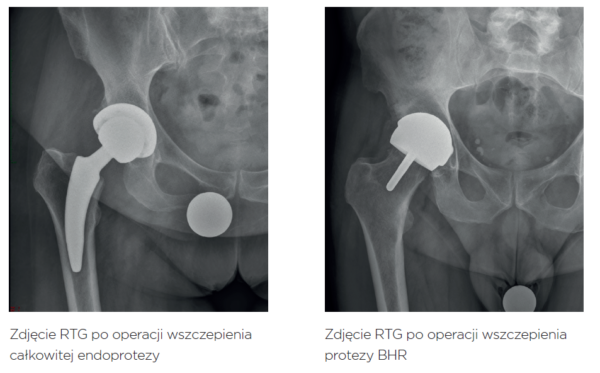Typical total hip replacement procedure is performed to treat degenerative changes. Its purpose is to remove two damaged elements of the hip joint – the acetabulum and femoral head – and to replace them with smooth implants, which together form the prosthesis. After cutting off and removing the head and neck of the femur, the medullary cavity is drilled, and then the endoprosthesis pin is inserted into it. An acetabulum is implanted into the pelvis.
A standard prosthesis more likely will wear out and will need to be replaced, especially for young, active people who qualify for hip replacement. Another (revision) endoprosthesis is much more difficult to implant and has a shorter endurance time compared to primary endoprosthesis.
Endoprosthesis enforces limitation of activity, e.g. sports or physical work due to the risk of dislocation reaching 4.5% of cases.




